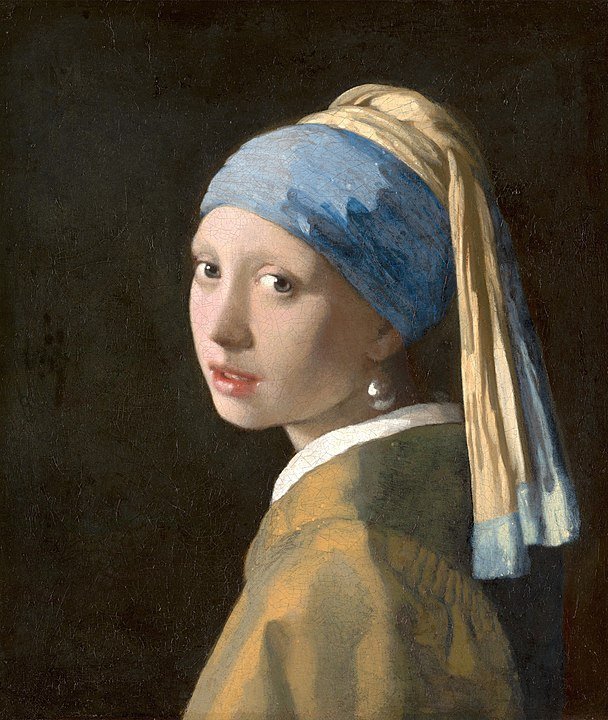What’s the deal with blue?
This color is everywhere, but where does it come from? What’s our relationship to the color blue?
A book I distinctly remember growing up is Gathering Blue by Lois Lowry. It’s part of a series of related stories(1) aimed at young people and focused on a young protagonist who learns the skills of embroidery and dyeing. A notable aspect to the story is how impossible it is to find, make, and use the color blue in her craft(2).
Blue represents something intangible to us. The sea and sky, equally sublime(3) and both blue through a trick of the light scattering but holds no pigment of its own. Where does all the blue(4) come from?
The Aegean Sea. Homer described the crossing to Troy from the Greek mainland as a wine-dark sea. A dubious fact I once heard is that people from way back when didn’t have a good word for blue, hence the wine-darkness, but also he was just describing what was probably a pretty dark and stormy sea.
As a vast oversimplification, our eyeballs see visible light either directly emitted from a source, scattered or filtered between the source and our eyes, or by reflecting off a surface that itself absorbs some of the other perceptible colors. Some stars emit blue light by their particular fusion process, and there are molecules that filter light to appear blue as it passes through them(5). The next time you’re walking around outside, keep an eye open for the color blue coming or reflecting from a purely natural source(6). We’re surrounded by a panoply of pigments so dense and varied that it’s hard to remember they’re there, but all these pigments have to come from somewhere. Where does all the blue come from??
Pigments have been made for many thousands of years from the earth. Browns, reds and yellows can be taken directly from the ground(7). Others can be taken from the plants and animals around us and processed into usable dyes. These are more vivid greens, reds, and yellows but these colors still all come from somewhat obvious sources(8). Usable blue is harder to come by. When you do it can present a number of issues.
Ultramarine blue has been a staple in western art for hundreds of years, but the imported lapis lazuli needed for it made the pigment worth its weight in gold or more(9). Dye created from woad, which grew throughout Europe, were rare to come by in the quantities needed(10), and cobalt is a heavy metal that’s dangerous to be repeatedly exposed to(11). Indigo, though much more potent than woad and easier to grow in warm climates, didn’t become common in the west until the age of colonization. The human spirit, indomitable as it is in its creative drive, decided to make what it couldn’t find.
Girl with a Pearl Earring (1665) Johannes Vermeer. Also a movie I remember watching MANY times with my mom growing up.
The first synthetic blue pigment was created by Egyptians over 3000 years ago(12). The combination of sand, copper, and calcium create a blue glass that, when ground, becomes a pigment that is incredibly stable(13). Later, when western science began to rediscover and build on knowledge of chemistry that’d been lost, the variety of synthetic pigments exploded(14). In a post industrial-scientific revolution world, we’re surrounded by a plethora of vibrant colors, and yes, even blues(15). The vibrancy of the world we’ve surrounded ourselves with is so commonplace that it’s hard to imagine a world with less.
In the plentiful downtime at the start of the Covid-19 pandemic, I took it upon myself to learn as much as I could about pigments and the science behind them as possible without having to pay anything. This turned out to be a surprising amount seeing as much of this science was deeply explored in the 1800s when a hot new color and a few textile mills was all a guy needed to make it big in the British Empire. Whenever you come by the store, please please cut me off whenever you’re done hearing about pigments, especially blues, because I can, and will, just keep going and going.
Including The Giver and Messenger, these were some pretty dark, dystopian books about a future that was both grim and repressive but also somehow beautiful? I remember thinking they seemed a bit heavy for kids, but life’s heavy. They touch on themes of community, friendship, and small acts of civic disobedience making a big difference bit by bit.
Before reading a synopsis for this book while researching this post, I remembered the plot being entirely centered around finding a usable blue pigment like a full-on Dungeons & Dragons quest, but I seem to have forgotten all the far more interesting parts of the book. I feel like I probably ought to give this one a re-read!
I have a very amateur, hobby-level interest in societies from the past (a minor in archaeology), and it’s an interesting point of comparison to see what beings, objects, or other forces people have assigned religious significance to. The sea and the sky both tend to feature prominently among pantheons, and I don’t blame people. They are both huge, always changing, dangerous, and above all beautiful. I learned what the word sublime meant by definition just a few years ago when I was figuring out some very big things about myself and realized I wanted to settle to be nothing less.
I’m blue, Da ba dee da ba di, Da ba dee da ba di, Da ba dee da ba di, Da ba dee da ba di, Da ba dee da ba di, Da ba dee da ba di, Da ba dee da ba di
When I was going through theater school for costume design, I was required to take a beginning lighting design class because the qualities of light bouncing off your costumes affects how they’re seen. Huge surprise, right? Anyways by the internal machinations of the university I actually ended up in a 400-level lighting class with four graduating seniors in their field, and I learned a lot that I still use every day. It goes to show that if you aim higher than your station, even if by accident, you stand to gain a lot.
George Carlin did a really great standup bit, Where’s all the Blue Food, that illustrates this point nicely. I don’t know exactly how I feel about George Carlin, and honestly he was a bit before my time, but I do admire some of his statements condemning comedy that “punches down.”
If you haven’t seen pictures of the Lascaux Cave Paintings, look now. Or better yet, visit just east of Bordeaux where they’ve built an exact replica of the cave and its art you can walk around in without worry of damaging the irreplaceable archaeological site!
I could probably do a very interesting blog post on the difference between dyes and pigments. I promise you’ll be absolutely riveted.
The Dutch painter Johannes Vermeer was allegedly so enamored with ultramarine blue that it drove him and his family into poverty. The opinion of this much-removed writer thinks that masterworks like Girl with a Pearl Earring and The Milkmaid were worth it as representations of less aristocratic people and an inversion of norms regarding the use of the color blue. Because of its high price and rarity, blue in paintings was generally reserved for depictions of the Virgin Mary. That’s one reason why for centuries blue was associated with femininity until at some point we decided that blue was totally macho. I could probably write another blog post just about blue and pink and how silly it all is.
This is the stuff we see Mel Gibson painted up with in Braveheart. Although it was grown all over Europe, woad was allegedly used by the Brigantes of ancient Britain because of blue’s association with a Celtic war goddess. That might also have just been weird Roman propaganda about the spooky, ooky barbarians, so who knows.
The cobalt mines of Germany were so deadly even without considering the long term impact of regular handling of heavy metals that stories began to circulate of evil creatures laying traps and killing the miners. These kobolds are mostly around these days for level 1 adventurers to beat up in Dungeons & Dragons.
Progress is not linear.
Blue pigments tend to be stable compared to reds, oranges, and yellows because the blue molecules reflect light of a blue wavelength, which is higher energy than the red light at the other end of the visible spectrum. Higher energy light/radiation can blast apart molecules, so reds especially tend to have bigger issues with lightfastness.
Unfortunately my favorite pigment story doesn’t concern the color blue. In 1856 an eighteen year-old British chemist who was experimenting with a cheaper way to synthesize quinine, a treatment for malaria and integral to colonial efforts deeper into the African continent in particular, accidentally discovered the first synthetic purple dye. This made him extraordinarily rich.
My second favorite pigment story is from 2009 when researchers from Oregon State University accidentally developed a new blue pigment for the first time in almost 200 years. YInMn Blue, named after the Yttrium, Indium, and Manganese atoms that make it up, is an incredibly boring name and a great reason why creative people should continue getting involved in the sciences! Because of the complex elements that go into YInMn Blue, it’s very expensive despite it being kind of commercially available. We don’t have any for sale at ARTspot, but we do have a swatch that a very cool and kind customer let me make from a 1/4oz of this new blue that cost them $40.



